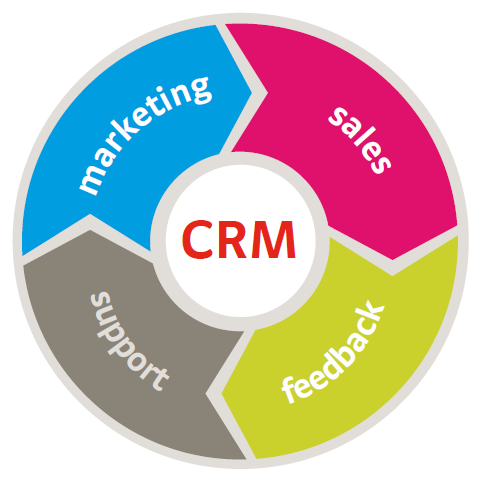SMEs are the engine of society. In developing countries, between 50 and 75% fail during the first three years.
Most entrepreneurs and SME owners find that the causes are mainly outside the company, especially in the political-economic environment. Beyond the policies of the current government, the ups and downs of the region’s economy, or the motivation of new generations of employees, there is generally something that causes some companies to fail while others to continue to grow or even become large companies.
Professionalization is not the same as being successful
The common problem observed in SMEs and enterprises is their lack of professionalism. This term implies a more serious approach by the company to achieve quality of the product and the service it offers, standardization of operations, improved management of employees, greater control of supplies and their suppliers, planning of actions, analysis of the results, and finally, a review of the leadership of the owners.
Unlike what happens in large companies that have boards and various advisers, the survival of the company is strongly related to the knowledge of the owner. Many of the entrepreneurs are highly trained; they are engineers, doctors, accountants, and other professions that have years of experience in their work. And even though they are all experts in the product or service, that is not always enough to have all the answers.
Entrepreneurs usually focus on a successful product, but other issues are left out due to lack of time, ignorance, lack of interest in the subject, or simply due to the human inability (yes, remember we are human!) to be able to cover all possible problems.
What factors may be influencing the failure of SMEs?
- Leadership: Management usually has an incomplete vision of all the components of the company and their interrelation. The focus is usually on the areas that attract us, and individualism is unintentionally encouraged by having to resolve issues “quickly”. With each failure, leaders are increasingly afraid to involve employees in decisions and find it difficult to manage frustration when external factors impact the business.
- The Team: It is not easy to have the instinct to recruit competent personnel when there is a lack of leadership, employee training, and fair salary structure. This is dominated by rewarding a lack of experience, resistance to change, and fear of advice from experts outside the company so they don’t “steal our ideas.” In short, there is often little time to listen to people and work as a team.
- The market: The customer is the first affected by an unstable organization of the company, and poor training leads to poor customer service. This is not considering their needs and complaints in the design of the product or service. There is also a lack of focus on a specific type of customer, and there is no sales plan that takes into account the peaks in demand and job losses. Investment in promotion and market research are often avoided. There is ignorance of the competitive advantages, their own weaknesses, and minimization of the strengths of the competition.
- Planning: Normally, a business plan is lacking and long-term objectives are not defined. If there are short-term objectives, they have not been communicated to employees. Potential risk analysis and prevention are missing, and the crisis of the growth is not foreseeing that it is not only bad not to sell, but also to sell a lot.
- The operation: The production and service processes are not defined or organized. Considering normal operating times, there are high levels of waste, high costs for rework and errors, and lack of technical capacity due to the inability to recruit the right people. There is mismanagement of inventories, quality controls are either missing or too abundant, and problems are resolved late or are hidden.
- Finance:Finance is a grey area and many important factors come into play. You may think SMEs may run out of finance to run operations and management, but the real problem arises when they cannot allocate funds to run day-to-day expenses. A company can inevitably see a halt in operations if it cannot short-term finance. But how can they break out of this situation?
Entrepreneurs and business executives partner with financial institutions like Affinity Beyond Capital (ABC), a company that has established itself as a lender for short-term capital. This short-term capital can be easily obtained without running into mundane paperwork or legal processes. ABC prides itself as a source of support for SMEs in the United States. They have a large portfolio of customers who can obtain loans from as low as a few hundred dollars to hundreds of thousands of dollars.
- Suppliers: Suppliers are not usually evaluated, nor is their performance monitored. The selection is by price, friendship, intuition, disorganization, and non-payment to suppliers. In some cases, there is difficulty in obtaining supplies that are specially adapted to the product due to not having long-term relationships with suppliers. There is also usually over-storage of stock leading to high capital immobilization, high maintenance costs, and losses due to obsolescence.
- Results: The lack of management of indicators leads to the results being observed intuitively on a day-to-day basis by mere observation of the owner to comments from middle managers without following a monthly trend or making an analysis of deviations versus the stated objectives. In smaller enterprises, fixed costs are not considered when defining total costs, and I find that many do not know how to differentiate personal expenses from those related to business, making it difficult to assess the profitability of the activity.
- Continuous improvement: In short, there is hardly any time to produce. How are we going to improve? Problems are “kicked forward” and are only solved when there is no other choice, intuitively, and without an in-depth analysis of real events and trends.
If any of these problems are occurring in your company, it is time to act before entering the 90% that must abandon your company. In the next posts, we will see how to act in each of these areas.



